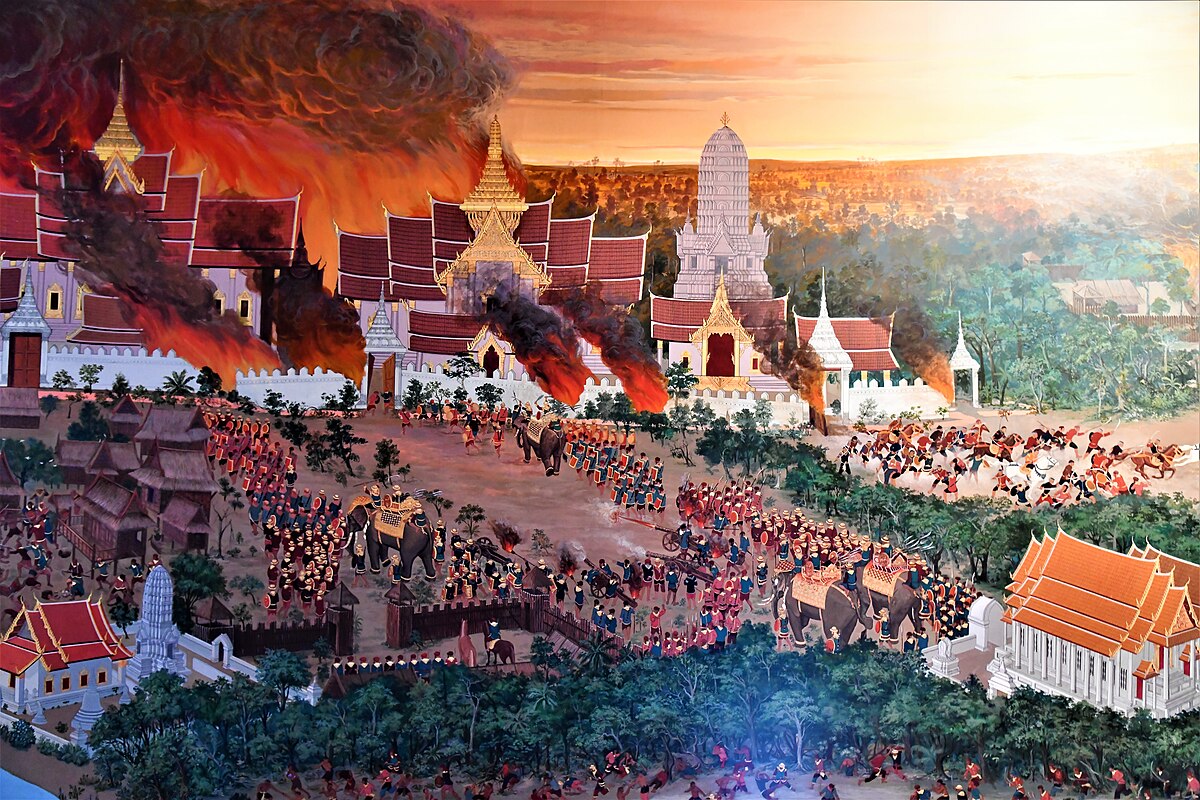
Fall of Ayoudhia
Ayutthaya, ThailandThe Burmese–Siamese War (1765–1767), also known as the fall of Ayoudhia was the second military conflict between the Konbaung dynasty of Burma (Myanmar) and the Ban Phlu Luang dynasty of the Ayutthaya Kingdom of Siam, and the war that ended the 417-year-old Ayutthaya Kingdom.[50] This war was the continuation of the 1759–60 war. The casus belli of this war was also the control of the Tenasserim coast and its trade, and Siamese support for rebels in the Burmese border regions.[51] The war began in August 1765 when a 20,000-strong northern Burmese army invaded northern Siam, and was joined by three southern armies of over 20,000 in October, in a pincer movement on Ayutthaya. By late-January 1766, the Burmese armies had overcome numerically superior but poorly coordinated Siamese defenses, and converged before the Siamese capital.[50]
The siege of Ayutthaya began during the first Qing invasion of Burma. The Siamese believed that if they could hold out until the rainy season, the seasonal flooding of the Siamese central plain would force a retreat. But King Hsinbyushin of Burma believed that the Chinese war was a minor border dispute, and continued the siege. During the rainy season of 1766 (June–October), the battle moved to the waters of the flooded plain but failed to change the status quo.[50] When the dry season came, the Chinese launched a much larger invasion but Hsinbyushin still refused to recall the troops. In March 1767, King Ekkathat of Siam offered to become a tributary but the Burmese demanded unconditional surrender.[52] On 7 April 1767, the Burmese sacked the starving city for the second time in its history, committing atrocities that have left a major black mark on Burmese-Thai relations to the present day. Thousands of Siamese captives were relocated to Burma.
The Burmese occupation was short-lived. In November 1767, the Chinese again invaded with their largest force yet, finally convincing Hsinbyushin to withdraw his forces from Siam. In the ensuing civil war in Siam, the Siamese state of Thonburi, led by Taksin, had emerged victorious, defeating all other breakaway Siamese states and eliminating all threats to his new rule by 1771.[53] The Burmese, all the while, were preoccupied defeating a fourth Chinese invasion of Burma by December 1769.
